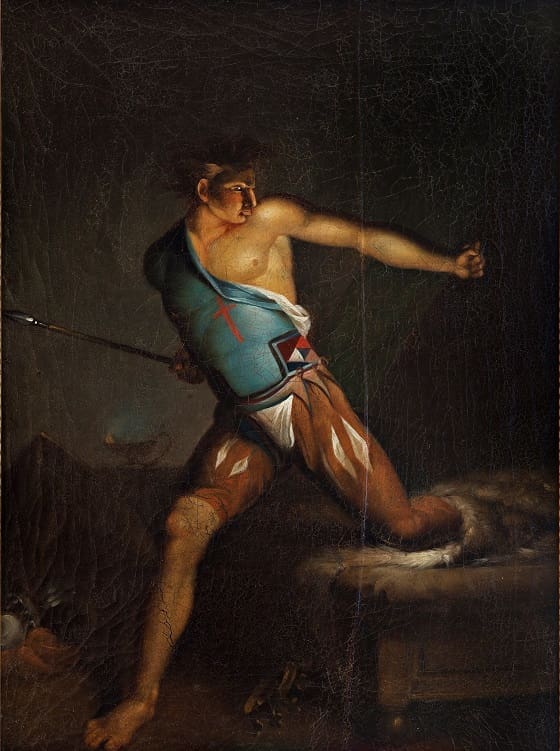Nicolai Abildgaard (?)
Richard III terrified by nightmarish visions. Shakespeare, Act 5, Scene 9, n.d.
Oil on canvas, 37 x 30 cm.
Inventory number: 0185NMK
Gift from stockbroker P. Rørvig, 2000
On the eve of the decisive battle at Bosworth, the terrified English King Richard III leaps out of his bed and grabs his spear. He has just awoken from a nightmare where he was haunted by the spirits of his victims. Later in the play, the nightmare turns out to have been a symbolic prophecy of tomorrow’s battle, where the king loses his crown as well as his life. An overturned crown on the floor points to the catastrophic defeat where the king must relinquish his throne. Nicolai Abildgaard has depicted a scene from the Shakespearean tragedy Richard III, which revolves around the English monarch’s bloody road to the throne and his subsequent fall. The scene is marked by a sense of intensity and drama, underscored by the king’s twisted body and the chiaroscuro-like contrast between light and darkness. Abildgaard’s paintings are often characterised by underlying moral messages. In this painting, he shows how pride and lust for power ultimately leads to corruption.
Nicolai Abildgaard (1743–1809)
Abildgaard belongs to the generation before the Golden Age painters. He was among the Danish artists who carried out Grand Tours abroad, particularly to Italy. During his years of travel, the time in Rome was critical. Here, Abildgaard studied antique art and great Renaissance and Baroque artists such as Raphael and Annibale Caracci. In Rome, he also met the Swiss-British painter Johan Heinrich Füssli, whose demonic pictorial universe made a great impression on him. Abildgaard was a learned man with a broad interest in history, mythology and art theory alike, and the inspiration for his subjects was primarily found in the literary world. His masterpiece consisted of ten large paintings for the great hall at Christiansborg, of which seven were lost in the fire of 1794.


